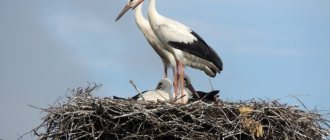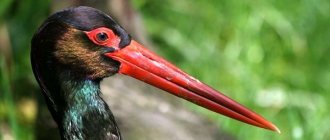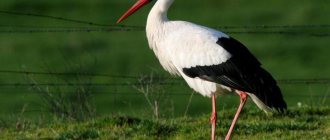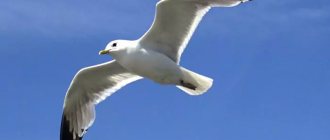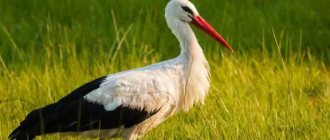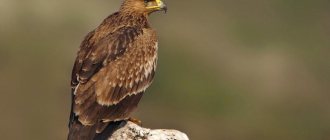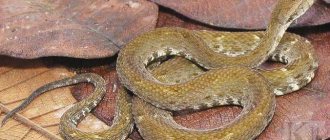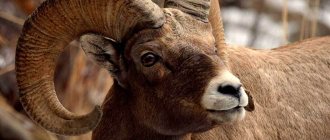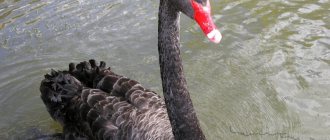Description of the stork
Storks range in height from 60 to 150 cm. All or part of the head and the upper part of the neck may not have feathers and are usually brightly colored. The stork bird is silent or almost silent due to the lack of a fully developed syrinx (the vocal organ of birds), but some of them rattle their beaks loudly when excited.
They fly, alternately flapping and gliding, with their necks outstretched and their legs stretching. Storks are found mainly in Africa, Asia and Europe. One species of stork, the black stork, is also found in Australia.
Most storks gather in flocks, except during the breeding season, when they mate.
What do storks eat? The stork continues feeding all day. Most of these birds eat small animals caught in shallow waters and fields. Some storks, like the marabou stork in Africa or, as it is called in India, the adjutant bird, feed mainly on carrion.
White storks
A stork's nest is a large branched platform, built by both a male and a female stork, in trees or on rocky ledges. The white stork builds its nest on roofs and chimneys.
Typically, a stork hatches from three to six eggs. The eggs are hatched alternately by both parents. Usually stork eggs are snow-white. Stork chicks hatch approximately five weeks from the start of laying.
Area
The Far Eastern white stork is found along the border of Russia and mainland China, especially in the Amur and Ussuri river basins. Winters in the lower Yangtze River basin and southern China, and small groups have been seen in North and South Korea, Japan, the Philippines, northeastern India, Burma and Bangladesh. In summer, the black-billed stork is occasionally found in eastern Mongolia. Currently, the population of the Far Eastern stork is in decline, after a significant reduction in the number of these birds in Russia.
Types of storks
Storks are divided into typical storks (subfamily Ciconiinae) and wood storks (Mycteriinae).
Wood storks (one species of Mycteria and three species of Ibis), originally called ibises, had curved bills, reminiscent of ibises in this respect. Typical storks have a straight or almost straight beak.
The wood stork (Mycteria), adjutant stork (Leptoptilos dubius), or adjutant bird is found in India and Southeast Asia, and the lesser adjutants (L. javanicus) are typical scavengers with bare pink skin on the head and neck.
The African wood stork (Ibis ibis), or yellow stork, is about 100 cm tall, has a yellowish beak and a red scalp.
The black stork (Ciconia nigra) is found in Europe, Asia and Africa, is about 100 cm tall, black with a white belly patch, red beak and red legs.
Two open-billed storks are called barnacle storks , found in tropical Africa and southern Asia. These are small storks that feed on snails.
The saddle-billed stork or saddle-billed stork (Ephippiorhynchus senegalensis) is a beautiful, graceful stork of tropical Africa. The height of this stork is more than 120 cm. The saddle-backed stork has exceptionally long and thin legs and neck. The slightly curved red beak resembles a saddle - hence the name of the stork. The beak is crossed by a wide black stripe, crowned in front of the eyes with a small yellow plate.
Saddle-billed stork
The white stork (Ciconia ciconia) is found throughout Europe and Asia and winters in South Africa. It is a majestic bird, about 100 cm tall, white with black feathers, a dark red beak and reddish legs. Its numbers are declining, partly due to human destruction of its habitat. Only one species, the eastern white stork (C. ciconia boyciana), is considered critically endangered. The Red Book really contains such a sad page as the “white stork”.
Photo of a white stork flying
The wood stork (Mycteria americana), often erroneously called the "jabiru", ranges from the southern United States to Argentina. It is white with black wings and tail and a curved dome.
Appearance and features
The black stork is a large bird, from 95 to 100 cm long with a wingspan of 143 - 153 cm and weighing about 3 kg, the height of the bird can reach 102 cm. It is slightly smaller than its white counterpart. Like all storks, it has long legs, an elongated neck and a long, straight, pointed beak. The plumage is all black with a purplish-green glossy tint, except for the white underparts of the chest, belly, armpits and wing flaps.
The breast feathers are long and shaggy, forming a kind of ruff. Both sexes are identical in appearance, except that males are larger than females. Young black storks do not have the same rich colors on their feathers, but these colors become vibrant by one year.
The bird walks slowly and sedately on the ground. Like all storks, it flies with its neck extended. The bare skin near the eyes is red, as is the beak and legs. During the winter months, the beak and legs turn brownish. Black storks have been recorded to live 18 years in the wild and over 31 years in captivity.
Birds have a wide geographical distribution range. During the nesting season, they are found throughout the Eurasian continent, from Spain to China. In autumn, individuals of C. nigra migrate south to South Africa and India to winter. The black stork's summer range begins in East Asia (Siberia and northern China) and extends into Central Europe, as far as Estonia in the north, Poland, Lower Saxony and Bavaria in Germany, the Czech Republic, Hungary, Italy and Greece in the south, with outlying populations in central -southwestern region of the Iberian Peninsula.
The black stork is a migratory bird that spends the winter in Africa (Lebanon, Sudan, Ethiopia, etc.). Although some populations of black storks are sedentary, an isolated population exists in South Africa, where the species is more numerous in the east, in eastern Mozambique, and is also found in Zimbabwe, Swaziland, Botswana, and less commonly in Namibia.
Interesting fact: In Russia, the bird is found from the Baltic Sea, to the Urals, through Southern Siberia all the way to the Far East and Sakhalin. Absent in the Kuril Islands and Kamchatka. The isolated population is located in the south, in Stavropol, Chechnya, and Dagestan. The largest population lives in the Middle Pripyat nature reserve, located in Belarus.
The black stork makes its home in quiet wooded areas that are close to water. They build nests high in trees and feed in swamps and rivers. They can also be found in hilly, mountainous areas if there is enough water nearby to find food. Less is known about their wintering range, but these areas are believed to be in wetlands where food is available.
These birds of prey find food by standing in the water with their wings spread. They walk unnoticed with their heads down to see their prey. When a black stork spots food, it throws its head forward, grabbing it with its long beak. If there is little prey, black storks tend to hunt on their own. Groups form to take advantage of the abundant food resources.
The diet of black storks mainly includes:
- frogs;
- acne;
- salamanders;
- small reptiles;
- fish
During the breeding season, fish makes up the majority of the diet. It may also feed on amphibians, crabs, sometimes small mammals and birds, as well as invertebrates such as snails, earthworms, molluscs and insects such as water beetles and their larvae.
Foraging occurs primarily in fresh water, although the black stork may occasionally forage on land. The bird patiently and slowly wanders through the shallow water, trying to shade the water with its wings. In India, these birds often feed in mixed-species flocks with the white stork, white-necked stork, demoiselle crane and bar-headed goose. The black stork also follows large mammals such as deer and livestock, presumably to eat invertebrates and small animals.
Interesting fact: Black storks move along the ground at a steady pace. They always sit and stand upright, often on one leg. These birds are excellent “pilots”, flying high in warm air currents. In the air, they keep their head below the line of their body, stretching their neck forward. Apart from migration, C. nigra do not fly in flocks.
Known for their calm and secretive behavior, C. nigra are very cautious birds, tending to stay away from human habitations and any human activity. Black storks are solitary outside the breeding season. It is a migratory bird that is active during the day.
Typically found alone or in pairs, or in flocks of up to one hundred birds during migration or in winter. The black stork has a wider range of vocalizations than the white stork. His main sound he makes is like a loud inhale. This is a hissing sound as a warning or threat. Males display a long series of squealing sounds that increase in volume, and then the sound pressure decreases. Adults may bang their beaks as part of a mating ritual or in anger.
By moving their bodies, birds try to interact with other members of the species. The stork places its body horizontally and quickly tilts its head up down to about 30° and back again, prominently highlighting the white segments of its plumage, and this is repeated several times. These movements are used as a greeting between birds and - more energetically - as a threat. However, the solitary nature of the species means that threat displays are rare.
Ciconia nigra breed annually in late April or May. Females lay 3 to 5 white oval eggs per clutch in large nests made of sticks and mud. These nests are often reused over many seasons. Parents sometimes carelessly care for birds from other nests, including young egg-eating eagles, etc. They nest solitarily, pairs are scattered across the landscape at a distance of at least 1 km. This species can occupy the nests of other bird species such as the Kaffir eagle or hammerhead and usually reuse the nests in subsequent years.
Interesting fact: The black stork takes 32 to 38 days to hatch its eggs and up to 71 days before the young plumage emerges. After fledging, the chicks remain dependent on their parents for several more weeks. Birds reach sexual maturity when they are 3 to 5 years old.
When courting, black storks display aerial displays that appear unique among storks. Paired birds take off in parallel, usually over the nest territory early in the morning or in the evening. One of the birds spreads its white lower tails and the pair calls to each other. These courtship flights are difficult to see due to the dense forest habitat in which they nest. The nest is built at a height of 4–25 m. The black stork prefers to build a nest on forest trees with large crowns, placing it far from the main trunk.
Males and females share care of the young generation and build nests together. Males look closely at where the nest should be and collect sticks, dirt and grass. Females build a nest. Both males and females are responsible for incubation, although females are usually the primary incubators. When the temperature in the nest becomes too high, the parents will occasionally bring water in their beaks and splash it on the eggs or chicks to cool them. Both parents feed the young. The food is regurgitated onto the floor of the nest and young black storks will feed on the bottom of the nest.
There are no clearly established natural predators of the black stork. Humans are the only known threat to black storks. Much of this threat is due to habitat destruction and hunting.
The black stork is much less common than the white one. Their numbers have declined greatly since the mid-19th century due to hunting, egg removal, intensified forest management, loss of trees, drainage of scrub forests and forested swamps, riots in Horstplatz, and collisions with power lines. Recently, numbers in Central and Western Europe have begun to gradually recover. However, this trend is under threat.
Interesting fact: Scientists believe that the black stork harbors more than 12 types of helminths. The dominant species have been reported to be hian Cathaemasia and Dicheilonema ciconiae. Juvenile black storks were shown to harbor fewer helminth species, but the intensity of infection was higher in chicks than in adults.
Black storks are themselves predators of small vertebrates in the ecosystems in which they live. They hunt mainly aquatic life such as fish and amphibians. The temperature of the black stork's digestive tract allows the fluke to complete its life cycle. The fluke is usually found in its primary host, a fish species, but is ingested by C. nigra during feeding. It is then passed on to the chicks through feeding.
Black stork numbers have been declining for many years in Western Europe. This species has already been exterminated in Scandinavia. The population of India, the main wintering destination, is inexorably decreasing. The bird used to regularly visit the Mai Po swamps, but is now rarely seen there, and overall population declines have been observed throughout its Chinese range.
Its habitat is changing rapidly across much of Eastern Europe and Asia. The main threat to this species is habitat degradation. The area of suitable habitat available for breeding is declining in Russia and Eastern Europe due to deforestation and destruction of large traditional nesting trees.
The black stork is threatened by hunters in some countries in southern Europe and Asia, such as Pakistan. Breeding populations there may be destroyed. The black stork has disappeared from the Ticino River valley in northern Italy. In 2005, black storks were released into the Lombardo del Ticino park in an attempt to restore the population.
The population is also threatened by:
- rapid development of industry and agriculture;
- dam construction;
- construction of facilities for irrigation and hydroelectric power production.
Winter habitats in Africa's wetlands are further threatened by agricultural conversion and intensification, desertification, and pollution caused by concentrations of pesticides and other chemicals. These birds are sometimes killed by collisions with power lines and overhead cables.
Since 1998, the black stork has been assessed as not endangered by the IUCN Red List of Threatened Species. This is due to the fact that the bird has a large distribution radius - more than 20,000 km² - and because its numbers, according to scientists, have not decreased by 30% over ten years, or three generations of birds. Therefore, it is not declining rapidly enough to qualify for vulnerable status.
However, the condition and size of populations are not fully studied, and although the species is widespread, its number in some areas is limited. In Russia, the population has decreased significantly, so it is in the country's Red Book. It is also included in the Red Data Book of the Volgograd, Saratov, Ivanovo regions, Khabarovsk Territory and Sakhalin region. In addition, the species is protected in: Tajikistan, Belarus, Bulgaria, Moldova, Uzbekistan, Ukraine, Kazakhstan.
All conservation measures aimed at increasing species reproduction and population density should cover large areas of predominantly deciduous forest and should focus on managing stream quality, protecting and managing feeding grounds, and improving food resources by creating shallow artificial ponds in or along grasslands. rec.
Interesting fact: A study conducted in Estonia showed that the preservation of large old trees during forest management is important to provide nesting sites for the species.
The black stork is protected by the Agreement on the Conservation of Eurasian Migratory Birds (AEWA) and the Convention on International Trade in Endangered Species of Wild Fauna (CITES).
Stork family
The family of storks (Ciconiidae), distributed among 20 species throughout the globe except North America, is characterized by a hard, straight beak, the upper jaw of which does not have a longitudinal groove, but is sometimes equipped with a short groove in front of the opening of the nostril. The cover of the lower leg, consisting of hexagonal scutes, connecting membranes between the three front fingers and, finally, a straight-cut or slightly rounded tail, which is fork-shaped only in exceptional cases.
Storks live in flat, richly irrigated and forested areas. They do not have a real voice, but they make a cracking sound by striking their jaws against each other. They rest and nest on trees and roofs of buildings. They usually form large communities only during flights; they also nest in colonies only as an exception. Stork nests are quite strong buildings, which birds often use for many years in a row, in which case the nest often acquires very significant dimensions.
Saddle-billed stork beak
Storks fly relatively calmly, with their necks stretched forward and their legs pointing backwards; they do not flap their wings very quickly and soar from time to time. In the so far known species of the genus stork (Ciconia), the beak is straight and slightly compressed laterally, the head is usually bare only the edges of the eyes and a fork-shaped place on the chin, the tail is chopped off, its upper coverts are sometimes strongly developed, shaped like rudders, and the coverts located along the edges of the tail, reach its end and form a fork.
Along the banks of rivers in low-lying areas, near lakes and ponds, in swamps and bogs, in lowlands covered with meadows and cut by ditches, on cultivated land the white stork (C. alba) lives, however, it is never found in grains, reeds and reeds .
Natural enemies
Under natural conditions, storks do not have too many enemies, which is due to the relatively large size of such birds and their nesting in trees.
This is interesting! Ornithologists have long established the fact that storks sometimes carry out a kind of independent purge of the population, during which weak and sick relatives are destroyed.
However, the overall abundance of many species is declining as a result of landscape changes in natural habitats, including drainage of wetlands and pollution of water bodies. Chicks and adult birds belonging to the White Stork species often die on power lines.
Return to content
stork nest
Where there are few buildings, this stork builds, often in the company of its own kind, nests on tall trees with widely spread branches or with a broken top; in general, it likes to nest on the roofs of churches and houses, on chimneys that are not in use, or on people’s huts , who often put out cart wheels or large flat baskets specifically for him.
The nest is built from sticks, brushwood, twigs, lumps of earth, pieces of turf, reeds and reeds, straw, rags and similar material and reaches 1-1.5 meters in diameter. Usually a pair of storks uses the same nest every year, often taking possession of it only after heated fights with another pair, adjusting it again every year and thus often increasing the height to one meter or more.
Photo of a white stork in the nest
In such a high building, sparrows and city swallows sometimes find shelter and a place for a nest, and less often, starlings and house redstarts. When the weather is favorable, the stork often appears at the nest at the end of February, but usually only in March, sometimes unexpectedly.
Threats and defense
Wetlands around the world have been drained for agricultural development, and the habitat of the Far Eastern white stork is no exception, especially in breeding areas. In Russia, nesting sites are at risk due to spring fires, which destroy tall trees suitable for nesting, causing delayed reproduction and reduced reproductive success. In the black-billed stork's wintering grounds in China, overfishing is reducing food availability. Throughout its entire range, despite legal protection, this species of stork suffers from hunting and capture for zoos.
The Far Eastern stork is protected by law in Russia, Mongolia, China, North Korea, South Korea and Japan. It also benefits from many protected natural areas in Russia and China. The reintroduction of programs to protect black-billed storks in South Korea and Japan should help reduce population declines, but more protected areas are needed in the future to prevent habitat loss, a major cause of the bird's decline. Maintaining tall trees and adding artificial nests in potential breeding areas, as well as controlling human disturbance during nesting, will also encourage the birds to recover. Further protection efforts include campaigns against the use of fire by farmers and poaching of the nesting grounds of Far Eastern white storks.
Stork is a migratory bird
Many people ask: is the stork a migratory bird or not ? The stork is definitely a migratory bird, especially the well-known white stork . Of course, African storks do not fly - they are already warm. Our storks fly to us in small flocks, which then break up. The first to the nest is usually the male, and after a few days in the morning you notice the female, who has flown in at night. If a sudden frost sets in, the couple still remains in place, since the storks in these cases do not migrate south again, but try to find food for themselves on the ice-covered waters. Storks often have to endure poverty and even die of hunger. That's why storks fly away for the winter .
Storks fly south for the winter from the end of July. Beforehand, they wander around the vicinity of the nest, little by little they gather in flocks in vast meadows, and at the end of August they disappear completely. Migratory flocks consist of 5–5000 individuals.
Lifestyle and habitat
These birds choose meadow lowlands and marshy areas to live. Storks usually do not form large flocks, preferring solitude or living in small groups. The exception is the wintering period, then the societies in which such birds gather can number up to several thousand individuals.
An interesting fact is that during long flights, storks are even able to sleep in the air. At the same time, the breathing and pulse of these living beings becomes less frequent. But in this state their hearing only becomes more sensitive, which is necessary for birds in order not to get lost and not to get separated from the flock of their relatives.
For this type of rest in flight, a quarter of an hour is enough for birds, after which they wake up and their bodies return to normal.
During long flights, storks are able to fall asleep in flight without losing their “course”
When communicating with each other, storks are not characterized by sentimentality, because these graceful, beautiful-looking birds beat their sick and weakened relatives to death without any pity. Although from a practical point of view, such behavior is very reasonable and contributes to healthy natural selection.
It is interesting that in the works of writers of antiquity and the Middle Ages, the stork was often presented as the personification of caring for parents. There are widespread legends that such birds touchingly care for elderly individuals when they lose the ability to care for themselves.
White stork
Hatching chicks
In mid- or late April, the female white stork carries 3 to 5 pure white or yellowish-white eggs into the nest, which she incubates alone. The male provides her only with food. When the chicks hatch from the eggs, which the female continues to warm for one day, the nest is never left by both parents at the same time.
A whole month passes before the chicks learn to stand, and they remain in the nest for more than two months. In the first days, parents shove digested food down the chicks' throats, so that all they can do is swallow it.
Eggs in the nest
Subsequently, the parents first place food in the nest, and then on the edge of it, that has only been in the throat. At first, white storks feed their chicks with earthworms, leeches, insects and their larvae, later they get frogs, snakes, fish, birds and animals. Among mammals, the white stork catches, in addition to a large number of mice, moles and even young hares. He also eats poisonous snakes, after breaking their heads with his beak and breaking their spine.
Stork hatches chicks
The stork probably kills the toad, but never eats it. The chicks lie on their bellies for about ten days and only after this time do they begin to rest on their heels. Only little by little do they learn to rise to their feet. The behavior of the chicks becomes very amusing when they learn to jump in the nest, flap their wings and crack their beaks.
Listen to the sound of the stork:
The stork carries itself with dignity, walks majestically and flies beautifully, stretching out its neck and legs. When taking off, it jumps several times, then makes several moderate beats in the air with its wings, even flaps them abruptly, and finally glides through the air without visible movements of its wings.
Flight of storks
Storks fly relatively calmly, with their necks stretched forward and their legs pointing behind them, they do not flap their wings very quickly and soar from time to time. In the so far known species of the genus stork (Ciconia), the beak is straight and slightly compressed laterally, the head is usually bare only the edges of the eyes and a fork-shaped place on the chin, the tail is chopped off, its upper coverts are sometimes strongly developed, shaped like rudders, and the coverts located along the edges of the tail, reach its end and form a fork.
In the spring, the spouses of one couple, flying against each other in wide spirals, often rise in the air to an immeasurable height. The stork does not make real vocal sounds even during the mating period; old storks hiss somewhat, and young ones emit a hissing squeak. But the stork can loudly crack its beak, and at the same time, at least while standing, it throws its head on its back so that the lower jaw is upward, and in this strange position strikes its jaws against each other.
Stork flight
The young ones become accustomed to cracking their beaks already in the nest. This crackling sound is stronger in the male than in the female, and expresses joy, demand, hunger, anger and rage. With a crash, storks rise into the air, setting off on their journey in the fall, and they greet the nest with a crash when they appear at it in the spring.
The stork defecates no less strangely - it squirts feces in front, between its legs. The stork hides its beak just as strangely when it rests, standing on one leg. He does not stick it into the feathers of his back, as other birds do, but warms it, especially willingly in cold weather, between the long feathers of his neck.
In Turkey the stork is revered for its ability to destroy locusts, but in Greece it is hated and persecuted like the Turkish bird. In Russia, where the stork is still common in some places, its distribution area, reaching 57° north latitude, is spreading increasingly to the east. The stork winters in most of Africa. The length of the bird reaches almost 89 centimeters. Its color is generally white, but the flight feathers, large wing coverts and shoulder feathers are black, the throat, beak and legs are red.
Reproduction and offspring
Initially, all representatives of the order Angiformes or Storks from the Stork family nested mainly in trees, near human habitation, where they built a very large nest from branches, the weight of which could easily be several centners. Subsequently, such birds began to actively use the roofs of residential buildings or any other buildings to create nests. Currently, storks are increasingly making nests on high-voltage power poles and factory chimneys . The nest created by the stork can serve as a feathered refuge for breeding offspring for several years.
The male stork arrives at the nesting sites several days earlier than the females of this species appear there. Birds arrive in our country at the end of March or at the beginning of April. The male will consider the very first female to appear near the nest as his own, but very often several females fight for the right to give birth to offspring. The male stork takes care of the selected female, making quite frequent and loud clicking sounds with his beak. Similar sounds are made by the male when approaching the nest of a foreign male, after which the owner of the nest uses his beak to attack and strike the enemy.
Depending on the species, the number of eggs laid can vary from two to seven, but most often there are from two to five. Stork eggs are covered with a white shell and are incubated by the pair together. As a rule, males incubate their offspring during the daytime, and females exclusively at night. During the process of changing the brood hen, the birds make a special clacking sound with their beaks and use ritual poses.
Incubation lasts just over a month, after which sighted but completely helpless chicks hatch from the eggs. At the very first time, the hatched stork chicks feed mainly on earthworms, which are actively thrown out of the throats of their parents. Mature chicks are quite capable of independently snatching food directly from the parent’s beak.
This is interesting! The oldest currently known is the stork's nest, which was built by birds of this species on a tower located in eastern Germany and served as a feathered home in the period from 1549 to 1930.
Adult birds vigilantly monitor and control the behavior and health of all offspring, so chicks that are too weak or sick are mercilessly thrown out of the nest. About eight weeks after birth, young storks take flight for the first time under the care of their parents. For almost two, and sometimes three more weeks, these storks are fed and taught to fly well, improving their flying skills by their parents. However, storks acquire complete independence in the last ten days of summer, after which they fly away to warm places for the winter. Adult storks migrate to wintering grounds around September. Birds reach sexual maturity at three years, but prefer to nest later, at about the age of six.
Return to content
Black stork
The only Central European relative of the white stork, the black stork (C. nigra), loves the same places where it settles. The distribution of this species is almost as extensive as that of its white relative - to the north it extends, however, barely to the latitude of Sweden.
Black storks
Black stork nests:
- in Central and Southern Europe
- throughout Central Asia to China in the east.
He winters in:
- India,
- Persia,
- Palestine,
- Central, Western and Southern Africa.
Among the European countries on migration, it is found in Holland, France, Spain, Italy and Greece. In the spring, it happened here more than once to observe migrating flocks of several hundred pieces. The black stork nests less frequently in Germany - it is one of the greatest rarities. Nevertheless, it appears annually on the Rhine and sometimes on the Main. In Hungary, the black stork nests especially often in the middle Danube basin.
There is a whole colony of black storks in southern Hungary. However, there can be no talk of a real nesting colony, such as we are accustomed to seeing, for example, among herons. The black stork is found everywhere less frequently than the white one and, in contrast to the latter, avoids human habitation.
Photo of a black stork
It settles on plains, areas abounding in forests, adjacent to large rivers, lakes and small reservoirs. The black stork can also be found in real mountain forests, if they have suitable bodies of water for it.
Black stork caught a fish
The black stork's nest is located on the thickest and tallest trees of the forest area it occupies, but not at the very top, but most often on a thick branch extending from the middle or from the border of the second and third third of the tree - often it is far removed from the trunk. At the end of April, the nest contains from 2 to 5, usually 4 eggs of a light bluish-white color.
Black stork nest
The black stork does not differ in lifestyle and food from the white one. Its orange-yellow fat has an extremely unpleasant odor, but is not poisonous, as has been stated more than once. Biologically, it is somewhat reminiscent of herons in that it feeds primarily on fish. The length of the black stork is 86.5 centimeters, the color is brown-black with a metallic tint, only the chest, belly and thighs are white - the beak, throat, eye circles are red in old birds, greenish in young birds. The black stork is listed in the Red Book.
Lifestyle
Storks always settle in damp places closer to water bodies. They live in pairs or families, fly well and are not afraid of long journeys. The structure of their body allows them to masterfully use the movement of air masses to save energy in flight.
Stork habitats
The habitat of the stork depends entirely on what specific species we are talking about. In Europe you will meet white and black storks. Moreover, they have completely different preferences. Some species have nothing against being in the vicinity of humans, but in this case they choose inaccessible high places.
Photo: kipmu.ru
Diet
Storks hunt on land, slowly walking around the area and quickly grabbing prey. They eat frogs, toads, fish, small rodents, lizards and just about anything they pass by. Some species, like marabou, can even feed on carrion.
Photo: goodfon.ru
Wintering
In Europe and Russia, storks fly away to spend the winter in the warmth. Young individuals fly away earlier, following instinct. And adult birds begin their journey only in September. In flight, storks cover enormous distances, up to 200 km per day. In Russia they return quite early, by the end of March.
Photo: pxhere.com
Finch (50 photos): description of the bird, habitat and what it eats
Indian downy stork
A relative of our storks is the Indian downy stork (Ciconia episcopus), which lives in addition to East India also in Western India and on the Indian islands. It is much smaller in size than our white stork, and is dressed in black plumage with a coppery sheen. Its tail and rump, however, are white, and its neck is covered with short and soft white feathers, similar to down.
Indian downy stork
It differs from the African downy stork mainly in that the entire upper part of its head is black.
Where do they prefer to nest?
Places for nesting and hunting are chosen to be open, without tall trees. They often settle in lowlands, on the banks of fresh water bodies, and favor areas flooded with water, swampy areas with an abundance of food. In a word, birds are looking for areas where amphibians are found and they can easily get hold of insects and feed their voracious offspring.
It happens that storks choose rather dry areas of land, for example, they settle in savannas and steppes, where they settle right on the ground. They can also build nests on the top of rocks. Such hills are preferred by storks living in Portugal. Birds are not afraid of people and can make their nest right on the roof of a house, barn or on a power pole. It happens that birds are lured into the yard specifically with the help of devices so that they protect the area from snakes, small rodents, and insect infestations. To do this, branches are cut off at the tops of tree crowns or poles ending in circles are made. Such troubles are also explained by the fact that a stork that has built a nest not far from a person’s home is a sure sign that everything will be fine.
Free image/jpeg, Resolution: 5472×3648, File size: 3.82Mb, Storks in a nest
Gigantic stork
The genus gigantic stork (Mycteria) contains not only the largest storks, but in general the largest representatives of the group of wading birds. It is characterized by a beak strongly flattened laterally, gradually curved upward at the tip, and sometimes flat on the forehead. One species of this genus lives in the tropical countries of Asia, Australia, Africa and America.
The Indian representative, the Indian giant stork (M. asiatica), is distributed from Eastern India, on the one hand, across Western India and Ceylon, and on the other, across the Indian Islands to Australia. It lives, usually alone or in pairs, along the banks of large rivers and ponds and in swamps, where it feeds on reptiles, frogs, fish and mollusks.
Interesting Facts
Since these birds do not settle near people, a web camera has been installed in Estonia at the nesting site of the pair.
When migrating, black storks stay close to water so they can have a snack and rest. They have a voice and make sounds through their throat. In zoos they tried to cross the two breeds, but the idea was a fiasco. The mating rituals of birds are too different.
Great-billed stork
Peculiar storks include the genus of large-throated storks (Leptoptilus), widespread throughout the tropical countries of Asia and America. Its representatives are characterized by a straight conical beak and are distinguished from other storks by a free-hanging crop sac, a naked head and upper neck covered with sparse down, soft and curly lower tail coverts and their stocky appearance.
Great-billed stork
In its way of life, it resembles kites, with which it attacks carrion and, in human-inhabited areas, plays the role of flayers.
Argala
The more famous of the two representatives of this genus, the argal (L. dubius), ranging from Northern Hindustan through Eastern India to Sumatra, Java and Borneo and often found in the vicinity of large cities, appears, for example, in large flocks in Calcutta in the hot season. Previously, when the cleanliness of the city still left much to be desired, the argala at night usually sat on the roof of the governor’s house and other tall buildings in the city.
Argala stork
As a useful cleaner of street sewage, he enjoys the protection of the law in many areas, but, in addition to carrion and other garbage, he also eats reptiles, frogs and fish. This bird is also called the bald stork orderly . This bird hatches its eggs in large societies, often together with pelicans, and it is remarkable that although it has no vocal muscles and usually cracks its beak like our storks, it can nevertheless produce a cry reminiscent of the lowing of a cow.
What helps storks fly for a long time
The path from Europe to Africa is not short. To cope with such a distance, you need to have certain physical characteristics. Let's consider what natural adaptations the stork has to fly for 2-3 days without getting tired:
- Body size. Large birds have no enemies in the air, and this makes their path much easier.
- Wings. Long, narrow, strong, they allow you to stay on air currents for a long time.
- The ability to doze during the flight. This fact has long been established and is beyond doubt. The duration of sleep is short, no more than 10-15 minutes, but this is enough for the bird to gain strength.
- A long-established flyway. In such a corridor, flying birds spend less energy.
- Sufficient fat reserves. Thanks to the good natural resources of their own body, storks can fly long distances in a single throw.
Young individuals, having flown to the tropics for the winter, are not always able to return home. It has been noticed that flocks of immature birds often remain to live on the African continent until they gain enough strength and until the powerful reproductive instinct speaks loudly. After 2-3 years, with the onset of spring, the birds still gather in large groups and rush to where the storks live throughout the warm period.
Opening Stork
The fourth genus of stork birds present in India is the raspberry (Anastomus), one of its two species belonging to Africa and the other to India. The razin differs from other genera of stork birds in the shape of its beak, the halves of which do not meet each other at the end, but are equipped with leaves along the cutting edge. In addition to fish, frogs, insects and worms, these birds also feed on shells, deftly opening them and eating the contents; in this case, perhaps, they are helped by the peculiar structure of the jaws.
Stork gaping
The Indian representative of this genus, the Indian open stork (A. oscitans), lives in Western India.
What does a stork eat in the wild?
Storks are predators by nature. They hunt reptiles and fish. The bird's diet consists of frogs, crabs, and eels. During the mating season, it is supplemented by small mammals. Storks feed their chicks with mollusks, beetles and worms.
Storks can eat snakes. They do not even shy away from poisonous species like vipers. Birds are able to sneak up on prey unnoticed and pick it up with a strong beak. After this, the storks try to stun the snake, and then swallow it whole.
The diet of white storks includes lizards, grasshoppers, and small vertebrates. When hunting, birds are quite leisurely and can wait for their prey for a long time. However, when the decisive moment comes to grab prey, the birds show great speed and agility.
Tantalum
The fifth and last genus of stork birds represented in India is Tantalus, 4 species of which are distributed in the tropical countries of Asia, Africa and America. It differs from other storks in the shape of its beak, which is rounded at the tip and rounded at the top and slightly curved downward, thus occupying the middle between the beak of the ibis and other storks.
stork tantalum
The Indian representative of this genus, the Indian tantalum (T. leuco-cephalus), known as the pelican ibis, belongs to the most famous birds of India, common in areas rich in water. It lives alone or in pairs, often nests socially in large trees near villages, easily becomes tame and is then very trusting of humans.
